News:
Not Picassos, but Still Precious: Museums Return Silver Lost to the Nazis
By Milton Esterow
Some German institutions have begun to give back cups, candlesticks, teapots and other items of crafted silver that Jews were forced to surrender during the reign of the Third Reich.
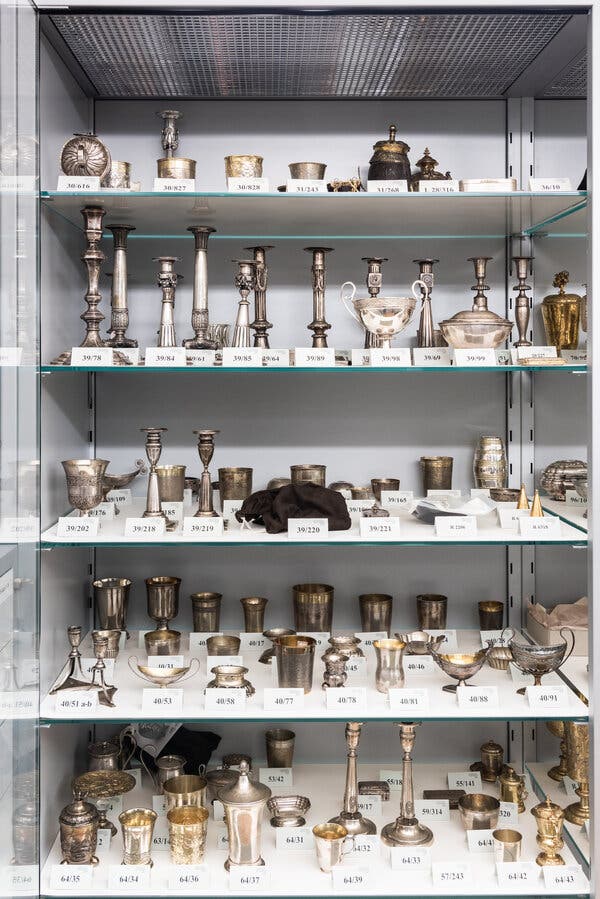
A storage cabinet at the Bavarian National Museum in Munich displays silver items that Jews were forced to sell in 1939. Some of the items have been returned to heirs in recent years.
It was noon on Nov. 10, 1938, when Nazi officers came to the door of William Bergman’s Munich home, arrested him for being a Jew and shipped him off to the Dachau concentration camp, about a 30-minute drive away.
Also taken from the home that day was a 19th-century kiddush cup typically used to sanctify the Sabbath and Jewish holidays.
After five months, Bergman, a metallurgist, managed to escape the camp by bribing its guards. He went to England and Montreal, where he lived and worked until his death in 1986.
But the cup was not seen again by his family until this February when his son, Steven Bergman, a retired sales executive in Maryland, received a package in the mail from a curator at a museum in Munich.
“One box was inside the other, all wrapped tightly with Styrofoam,” Bergman said. “They could have shipped an egg and it would not have broken.”
Inside was the kiddush cup, a searing reminder of a time when any precious metals owned by Jews became a target for seizure by the Nazis.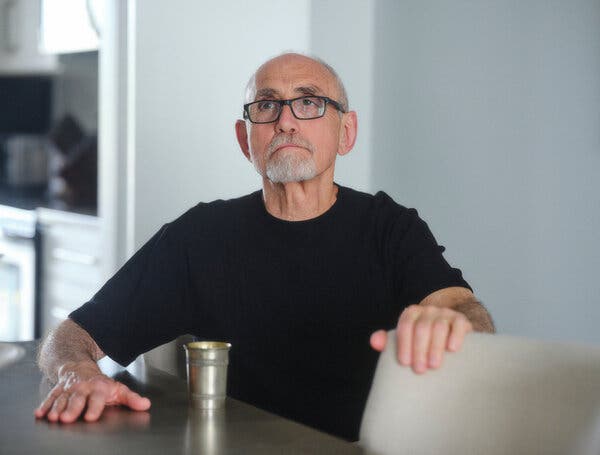
Steven Bergman said the kiddush cup that was returned to him is a meaningful reminder of his father, from whom it was stolen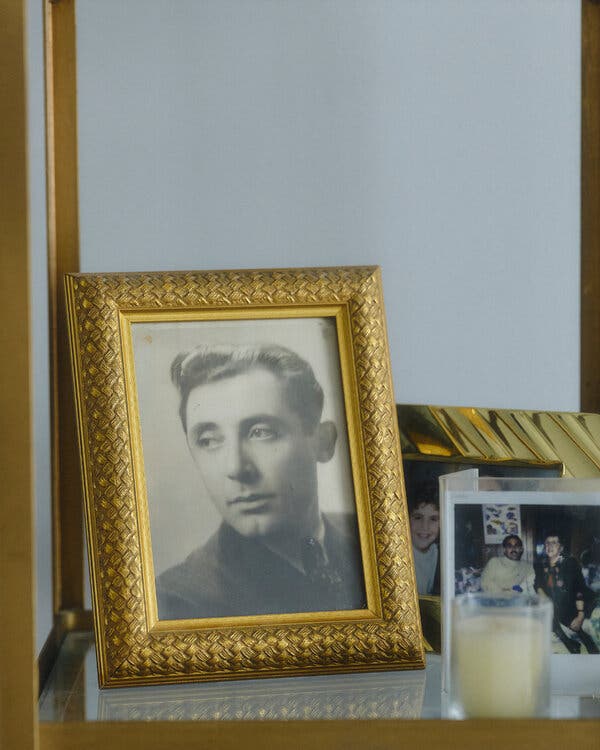
William Bergman was arrested as a Jew in 1938 and sent to a Nazi concentration camp, but he was able to escape after several months.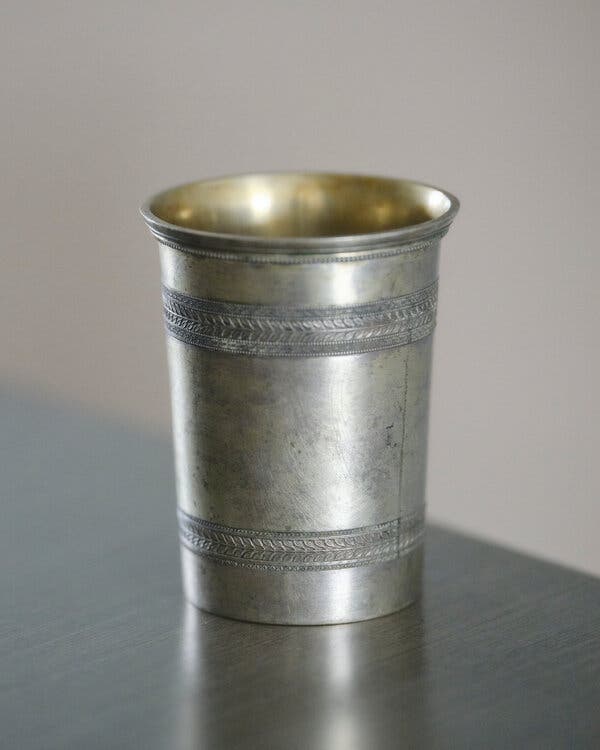
The kiddush cup that was taken from William Bergman’s Munich home in 1938 was lost to the family until this year when it was returned to his son by the Bavarian National Museum
Much attention has been focused in recent decades on the widespread looting by the Nazis of fine art owned by Jewish families. Less discussed has been the pervasive theft of more prosaic valuables from Jews who did not own Courbets or Klimts — but did own items like silver kiddush cups that were confiscated or pawned for peanuts on orders from the Third Reich.
Now, several German museums with collections of such silver are quietly engaged in a determined effort to return them, under an initiative started in recent years.
“I started looking for heirs of looted silver following an exhibition titled ‘Silver for the Reich — Silver Objects from Jewish Property in the Bavarian National Museum,’ which consisted of many of the 112 stolen items stored in the museum,” Matthias Weniger, a curator and head of provenance research at the Bavarian National Museum in Munich, said in an email. Since 2019 he has helped return an assortment of cups, candlesticks, spice containers and silver teapots to the Bergman family and a dozen others in the United States, England, Spain, France and Israel.
He has plans to return two dozen more items in coming months to families in Israel and several U.S. locations, including New York and San Francisco.
The search for heirs who have claims to the silver items is also underway at additional museums and archives in Munich, Stuttgart, Berlin and Hamburg.
The confiscations and forced sales of jewelry, silver and gold were coordinated by the Third Reich as it sought to raise capital. In 1939, for example, the Nazis required Jews to turn over jewelry, gold, silver, and other objects to 66 pawnshops in Germany.
“Most of the stolen silver went from the pawnshops to companies specializing in melting silver,” Weniger said. “In Munich alone, about 10 tons of jewelry and precious metal were registered. Thousands of pieces were acquired by museums. Families were sent a designated sum, mostly via bank transfer and often a year later.”
The prices paid were often just a fraction of their value, he said.
Last July, Weniger returned a partially gilded 300-year-old silver cup that had been stolen from Hermine Bernheimer in 1939. The cup was then donated by her heirs to the Jewish Museum in Göppingen, a city in southwestern Germany where she was born. Bernheimer died in the Theresienstadt concentration camp, about 50 miles north of Prague, in 1943.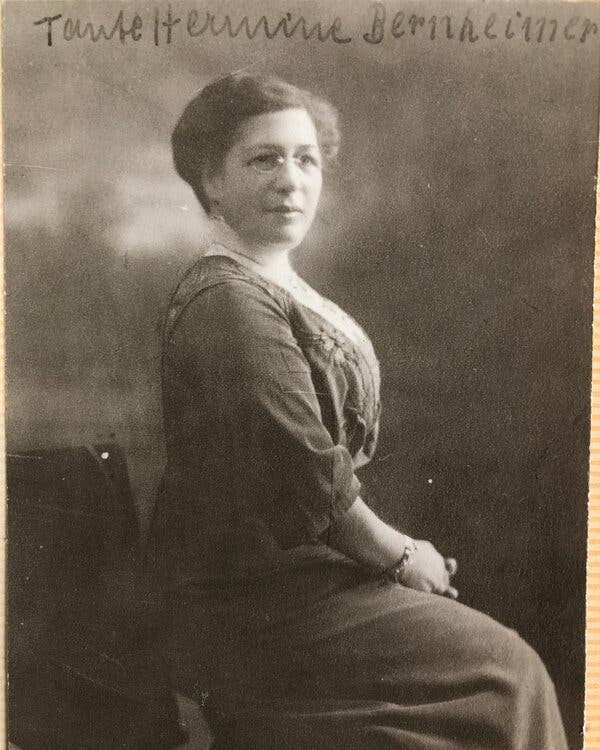
Hermine Bernheimer died in Theresienstadt concentration camp in 1943.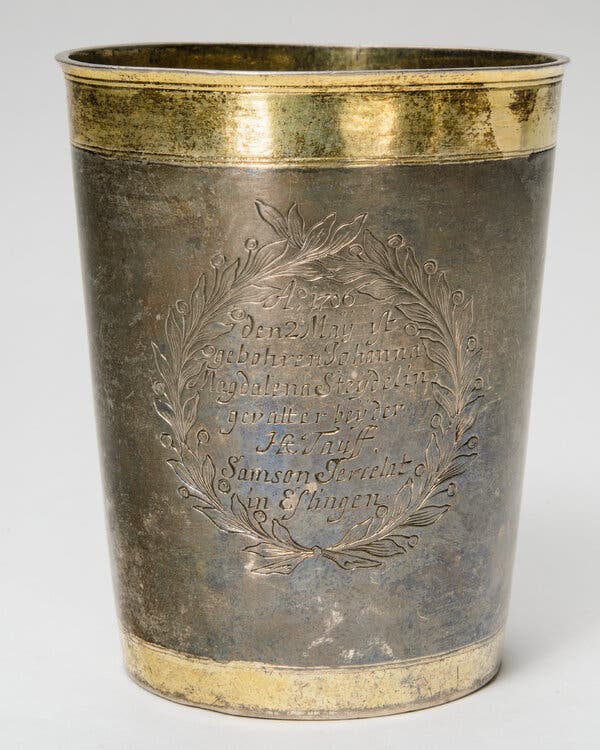
A baptism cup stolen from her by the Nazis was returned by the Bavarian National Museum to her relatives in 2022. They chose to donate it to a museum
“Hermine was my great-aunt,” said Naomi Karp, a lawyer in Washington, D.C. “After I was told that the cup had been found, I learned I had about 30 relatives in the United States, Australia and Germany. I also learned that the cup was a baptismal cup. I have no idea how a Jewish family got a baptismal cup, but maybe it was a gift to them.”
The experts involved in the restitution efforts describe it as close, painstaking work that often involves tracking down those pawnshop records.
In Stuttgart, Malena Alderete, a provenance researcher at the Württemberg State Museum, said pawnshop files for Stuttgart show which person had to hand over what kind of objects. “But unfortunately,” she said, “the objects are only vaguely described.”
Alderete said she worked closely with Katharina Hardt, a provenance researcher at the State Archives of Stuttgart. “Katharina and I are intensifying our research,” Alderete said. “We have started on five objects in the museum — two gold watches, a gold medal and two gold coins that the museum acquired in 1941 — and hope to gain new insights in the future.”
Weniger said that he and Regina Prinz, a provenance researcher at the Munich City Museum, had found similar documents last July in the Munich City Archives that helped track down which family names are associated with silver items that have been identified as problematic.
“The key to success in the search for heirs,” Weniger said, “is multiple databases and archives. Some cases take several years. Others take months, often many months. It took many months to find Steven Bergman. Our historian, Irene Krauss, started with sources in the Munich city archives and found that William Bergman emigrated from Munich to England. She then examined the central archives of Hesse and Baden-Wurttemberg, address books for Frankfurt, where members of the family lived for awhile, and ancestry.com, where she found index cards that said he sailed to Canada.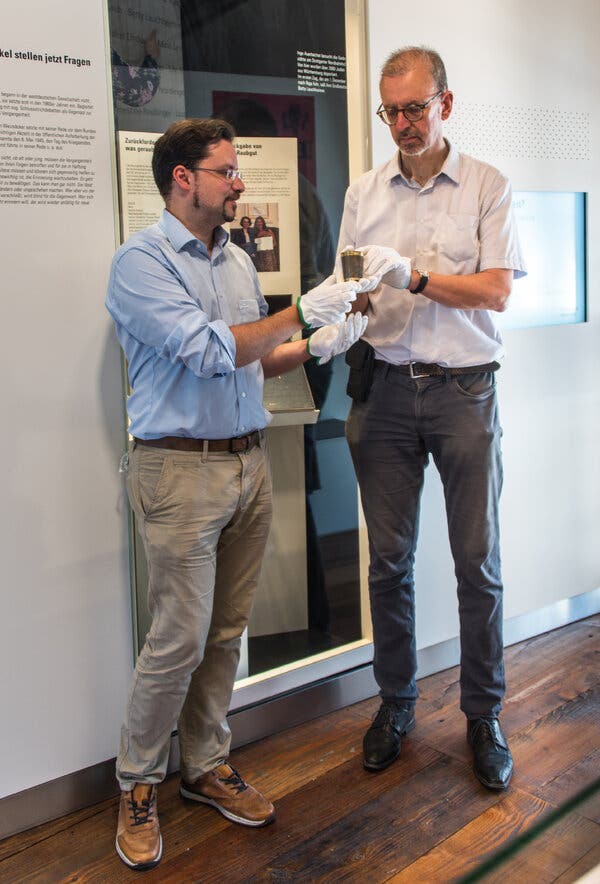
Matthias Weniger, right, a curator and head of provenance research for the Bavarian National Museum, presents the Bernheimer cup to Dr. Dominik Gerd Sieber, director of the Jewish Museum in Göppingen
“With findagrave.com, she found a photo of a slab for William Bergman with the inscription that he had children,” he continued. “She looked for obituaries and found them through newspapers.com. Google and Facebook led her to Steven Bergman’s wife and to him.”
Bergman said the cup the museum gave back to him is now in a cupboard in his home next to his mother’s crystal goblets. He said he plans to lend the cup to the Montreal Holocaust Museum.
“You know, it’s astounding,” he said. “Every time I see the cup, it reminds me of my father.”
Deborah Pomeranz, a provenance researcher at Berlin City Museum, said it acquired about 4,700 silver objects from a Berlin pawnshop from 1939 to 1940. “These were inventoried on record cards which gave a brief description of the objects and in many cases a photo,” she said. “All but 474 were lost — we don’t know how — during the later years of the war.”
Now, she said, they are looking for clues that will help them return items to rightful heirs.
In cases where there are multiple heirs, some families have chosen to donate the item to a museum. Olga Maier’s candlesticks, for example, stolen from her in 1939, were returned by Weniger last May and ultimately donated to the Jewish Museum in Munich, where Maier was born. She died in the Treblinka concentration camp in German-occupied Poland in 1942.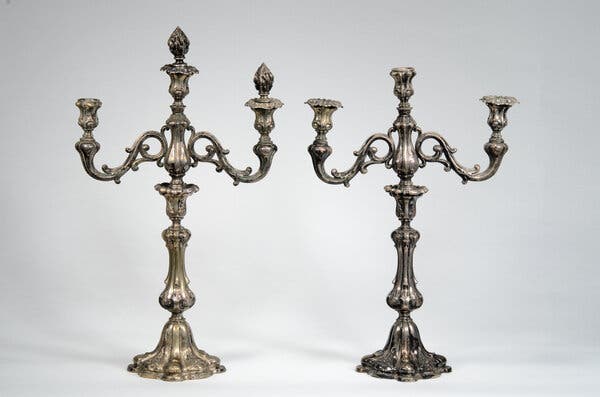
Much of the silver in German museums was turned over to pawnshops as a result of the 1939 edict that said Jews must relinquish ownership of jewels, silver and gold. They were typically paid a fraction of the true value of the items
“Thirty-two relatives had to consent on the agreement,” Weniger said, “15 in Israel, 11 in the United States, two in Germany, two in England, and one each in Canada and Denmark.”
In Hamburg, a few years ago, the Museum of Arts and Craftsreturned a kiddush cup dated 1757 to Michael Hayden, a leading geneticist who is a professor of medical genetics at the University of British Columbia in Vancouver, Canada.
Silke Reuther, a provenance researcher at the museum, said the cup, which depicts scenes from the biblical story of Jacob, belonged to Hayden’s grandfather, Max Raphael Hahn, whose collection of 160 Judaica objects was stolen in 1939. Hahn is believed to have been killed by the Nazis in a forest in Latvia in 1942.
“My grandfather had once lived in Hamburg, and I found that the Hamburg museum had Judaica,” Hayden said. “I saw some of their photographs and one looked like my grandfather’s cup. I contacted the museum and when the cup was returned to me in 2018, I was overwhelmed. I felt deeply moved. It was a profound connection to my grandfather who I never knew.
“The cup is kept in a safety deposit box in a Vancouver bank,” he added. “It has been on exhibition in Vancouver and Cologne. We bring it out for occasions — Passover, all the Jewish festivals.”
Weniger said that, although a lot of research has been conducted in Hamburg, Berlin and other spots, institutions in many cities need to do much more.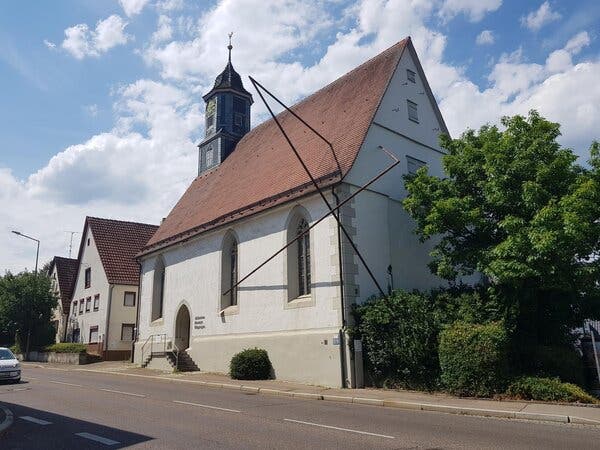
The Jewish Museum in Göppingen, the small city where Hermine Bernheimer was born, and where the cup she once owned is now part of the collection.
“The number of restitutions is, sadly, still comparatively small,” he said. “However, it turns out that our work itself and all the contacts — and even friendships — that result from it import much more to the descendants than the material repossession of the objects. Displaced during World War II all over the world, some relatives were not even aware of each other’s existence.”
Karp, who donated with her cousins their great-aunt’s silver cup, agreed and read from the remarks she made during the museum’s presentation ceremony.
“The handover of Aunt Hermine’s cup is amazing in many ways,” she said. “But it’s also hopeful — a precious sentiment in today’s disastrous world. Eighty-three years after German Jews were forced to turn over their objects of value to a totalitarian regime, a government employee, Matthias Weniger, put years of effort into finding Hermine’s heirs.
“Cousins from around the world came together on a handful of computer screens to decide the cup’s fitting home. A museum curator in my mother’s hometown recognized how this little museum could keep the legacy of Göppingen’s Jews alive by including it in the museum’s permanent exhibition. The stars finally aligned.”


